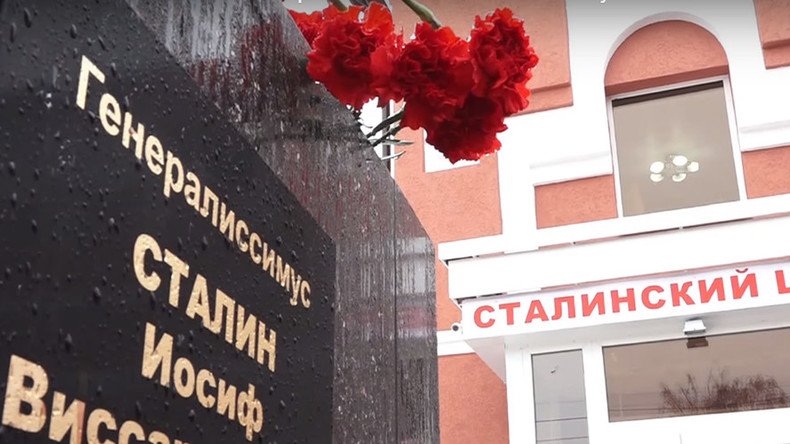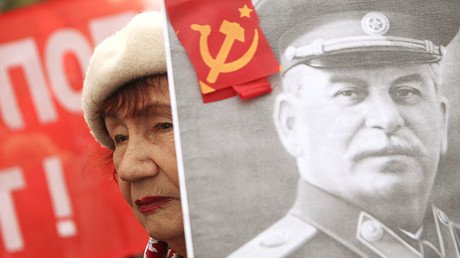Cultural center dedicated to Stalin opens in Russia on Soviet leader’s birthday

A long-awaited cultural center dedicated to 20th century Soviet leader Joseph Stalin and the period in history during which he ruled has opened in the city of Penza, marking the 136th birthday of the most controversial USSR figure.
A scientific, cultural and historical center dedicated to Stalin was given a ceremonial opening on Monday in the city of Penza, 625 kilometers southeast of Moscow.
Crowds gathered to lay flowers outside the center and pay their respects to the influential figure who shaped the history of the 20th century. While many in the West categorically view the Georgian native as a “ruthless tyrant,” the image of Stalin has been gaining a much more positive spin in Russia.
Joseph Stalin who ruled the USSR from 1924 until his death in 1953, remains one of the most polarizing figures in Russia’s history, reviled as a mass murderer by some, praised as a savior of the nation by others.
“Time itself defines the actual heroes of today. The image of Stalin is becoming more and more popular, first as a person, but as a simple man too. He was very modest, even though he was the head of a huge country,” Giorgii Kamnev, First Secretary of the Communist Party Regional Committee, said at the ceremony.
Under Stalin’s leadership, hundreds of thousands were executed and around two million perished in the infamous gulag labor camp system. However, his supporters believe that a certain heavy-handedness and purges were inevitable during rapid industrialization and the total national mobilization that eventually allowed the USSR to defeat Nazi Germany.
But addressing museum guests, the local communist leader stressed that the new center was built not to honor Stalin himself – but rather an entire era of Soviet history.
“We focus on the fact that it is not a museum, there are no historical items associated with Stalin here,” Kamnev said. “There is a historical and cultural centre. We will talk about the events that took place at that time, we will discuss them with historians and people connected with culture. It will be a scientific and cultural centre.”
It was Stalin’s role in the Second World War, his ability to mobilize resources and motivate troops that supporters usually cite as his greatest achievement, along with the introduction of the command principle and five-year plans aimed at boosting the country’s economy.
Earlier in the year, communists in Penza announced a plan to mark the 80th anniversary of the 1936 USSR Constitution by declaring 2016 the “Year of Stalin”.
One of the main aims of the 1936 constitution was to offer civil rights to the entire Soviet population. The constitution was also designed to get rid of the class system in the USSR, with former “class enemies” such as the nobility and the bourgeoisie, being offered full civil rights.
While exerting control over the Soviet economy, the government did allow a small-scale private economy for individual peasants as well as the private ownership of small plots of land. The constitution also reorganized the Soviet government based on direct elections. Article 124 of the constitution also guaranteed freedom of religion in an officially atheist state.
More than sixty years after Stalin’s death, his legacy continues, pitting Russians against one another: Those who will not forget his grandiose achievements and those who cannot forgive his monstrous crimes. Stalin was laid to rest twice. First, his embalmed body was interred in the Mausoleum on Red Square together with Vladimir Lenin in 1953, and then, eight years later, after his personality cult was denounced, he was buried next to the Kremlin walls.













